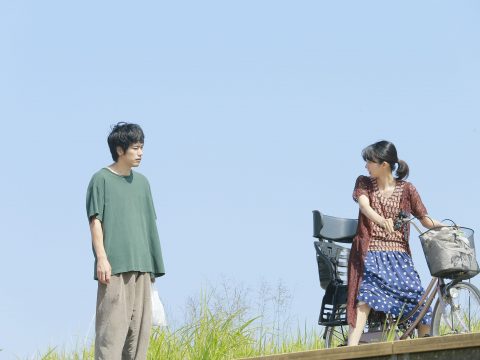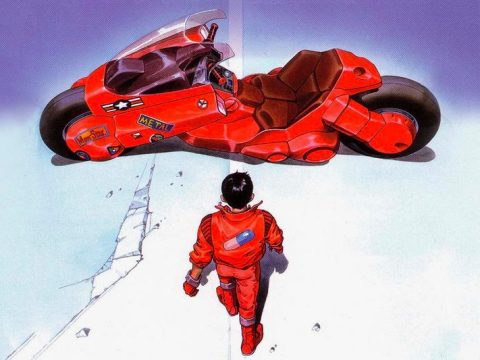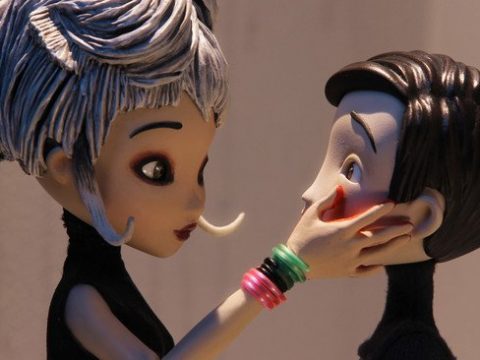
As far as I can tell, everybody that has reviewed the 1995 Keita Amemiya-directed film Mechanical Violator Hakaider has given it a collective thumbs-down. You could attribute this to the fact that most of the reviewers out there aren’t tokusatsu fans and didn’t find it appealing, using the ever-so-popular “IT LOOKS LIKE POWER RANGERS!!!•bCrLf argument that just makes them look less credible. Then again, the other half of this movie’s detractors are in fact tokusatsu fans, namely of Shotaro Ishinomori’s Jinzo Ningen Kikaider, the TV series/Anime/Manga that Hakaider originates from.
But then, wait a sec—I’m the only one who’s reviewing this flick that actually liked it? Last time I checked, I’m not sniffing paint thinner…so why am I the apparent crazy one of the bunch?
Okay, cue the psuedo-futuristic soundtrack; we’re getting to the bottom of this.
In Kikaider, Hakaider is a robot built by our hero’s creator, Doctor Komyoji. However, Professor Gill, leader of the DARK organization, adds a special twist to Hakaider’s construction that makes him impossible for Kikaider to beat—Doctor Komyoji’s brain, implanted inside Hakaider’s head (which is visible through his slightly transparent skull cap). As you can imagine, Hakaider sees fit to take advantage of this and beat the snot out of Kikaider during each of their encounters, quickly becoming the guy you loved to hate. Whether it was his silver shotgun or his trademark whistle intro, there were times when he’d outshine Kikaider in coolness, all the more fitting then that this memorable villain gets his own revamped movie, right?
 In Mechanical Violator Hakaider, the entire Kikaider storyline gets tossed into a blender, frozen in ice, and sculpted into something radically different than the source material. (I would have just said re-imagined but even that term doesn’t do it justice.) It’s now a distant post-apocalyptic future in which the most prosperous settlement for humanity is Jesus Town. That’s right. Jesus Town. In spite of its name, it’s not exactly The Happiest Place On Earth. Citizens live in fear of Gujrev and his Parliament forces, led by his right-hand man (or in this case robot), Mikhail. Anybody found not agreeing with the way things are run get forced into surgery that erases all of their emotions, leaving them in a sort of drooling child-like state. There’s a small band of resistance fighters that oppose them but even they aren’t exactly doing this for the noblest of causes, namely so they can take over the city for themselves. So the last hope for Jesus Town lies in, you guessed it, Hakaider — Gujrev’s first prototype enforcer who was deemed a failure for not obeying orders. Declaring himself the incarnation of evil after Mikhail deems himself to be the embodiment of justice, Hakaider sets out to take Parliament down with his bare hands.
In Mechanical Violator Hakaider, the entire Kikaider storyline gets tossed into a blender, frozen in ice, and sculpted into something radically different than the source material. (I would have just said re-imagined but even that term doesn’t do it justice.) It’s now a distant post-apocalyptic future in which the most prosperous settlement for humanity is Jesus Town. That’s right. Jesus Town. In spite of its name, it’s not exactly The Happiest Place On Earth. Citizens live in fear of Gujrev and his Parliament forces, led by his right-hand man (or in this case robot), Mikhail. Anybody found not agreeing with the way things are run get forced into surgery that erases all of their emotions, leaving them in a sort of drooling child-like state. There’s a small band of resistance fighters that oppose them but even they aren’t exactly doing this for the noblest of causes, namely so they can take over the city for themselves. So the last hope for Jesus Town lies in, you guessed it, Hakaider — Gujrev’s first prototype enforcer who was deemed a failure for not obeying orders. Declaring himself the incarnation of evil after Mikhail deems himself to be the embodiment of justice, Hakaider sets out to take Parliament down with his bare hands.
Now that sounds like a fun, roaring rampage of bloody revenge for the whole family, right? So then why did everybody hate it? For starters, the majority of this hatred stems from the script. To that extent, I somewhat agree that it was Hakaider‘s main weakness. Toshiki Inoue (the writer who I have a love/hate relationship with) managed to craft a decent story for this film but it’s so rushed that nothing is fleshed out. I loved the flipping around of ‘Good vs. Evil’ and the minor exploration into the “real meaning•bCrLf of that, but it doesn’t really go that far for the sake of the action. Before you start to blame this solely on Inoue though, you’ve got to remember the one thing that a good chunk of the naysayers out there neglected to mention — that Hakaider was made to be part of Toei’s Super Hero Fair, shown alongside movies for that year’s Sentai and Metal Hero incarnations for the kiddies that are really just extended TV episodes in terms of length. So, to fit into the block (and for the sake of attention spans), the full length morality tale that Inoue and Amemiya wanted to tell ended up getting placed on the runtime chopping block.
“But Mike!•bCrLf you’re probably thinking, “When Amemiya had the chance to do the Director’s Cut, couldn’t he have just done re-shoots then to fix the length?•bCrLf Sure they could have, but I’m betting that The Powers That Be at Toei Co. wouldn’t give him the budget for it when the time finally came. Think about it; according to some sources, Hakaider didn’t do so hot in theaters, why would the studio throw their money away a second time?

Shifting gears a bit, the other big issue people had with Hakaider were the special effects (to which I have to resist the urge to drag said detractors into a back alley and shake them violently to ask what the heck is wrong with them). This was made before Keita Amemiya discovered the wonders of CG in the mini-series, Tekkouki Mikazuki, so everything here was done with practical effects; Miniatures, stop-motion techniques, occasional bits of animated effects—the only bits of computer graphics in this movie were for console screen telemetry/readouts. In a time where pretty much every major special effect involves CG as a form of creative cop-out, you can’t help but to appreciate the effort the put into Hakaider in spite of the small budget. The suits look amazing, the design work is gorgeous, even the stop-motion effects in the final confrontation are fun to watch. Any complaints about the SFX work being too Power Rangers-esque or unable to be appreciated unless you’re a Tokusatsu fan is total and utter BS, as there are American films that have even lower-grade effects that are considered classics. (Evil Dead, anyone?)
And after me bashing the naysayers that could be reading this right now, you’re probably expecting an award-winning final defense of this movie that I believe should be on the AFI Top 100 Films of All Time. To tell you the truth, I don’t have one. It’s because I agree with some of the major critiques about Mechanical Violator Hakaider in that it’s not by any means a completely perfect movie. I’ve found myself fast-forwarding through some of the dream sequences, I hate how the original payoff of the Destruction Cannon got shafted in the theatrical edition, and I was among those who were wondering what the deal was with Gujrev bleeding feathers, but that’s the fun of it. This is one of those movies that you pick up on Saturday night at the local video store as a rental with a bunch of friends and a large bowl of fresh popcorn. (I say rental due to the fact that the DVD released by Media Blasters lacks any worthwhile features, namely the trademark “Making-of•bCrLf featurette that follows every Keita Amemiya flick. What? I’m a sucker for those….) Indeed, there are some parts that are laughable and even some bits that will have you scratching your head, but it’s still entertaining if you leave logic and analysis at the door. Don’t listen to the peanut gallery and give this one a shot. (Besides, if all else fails, this gives you an excuse to go check out the original Kikaider TV Series, can’t go wrong with that.)
Until the next, if you are justice…then I am evil!







